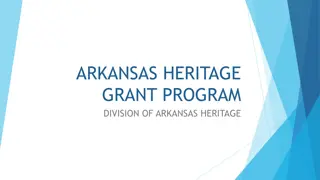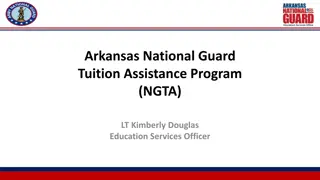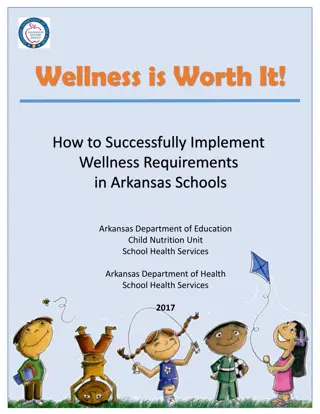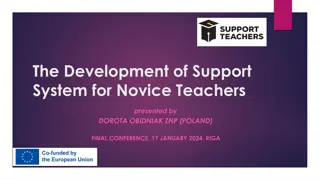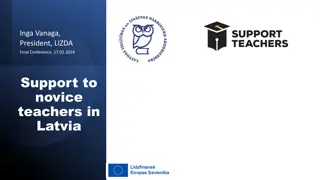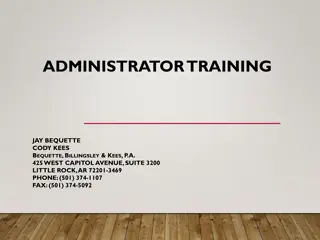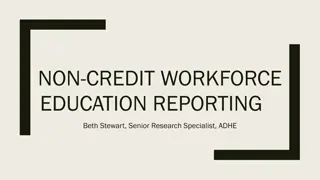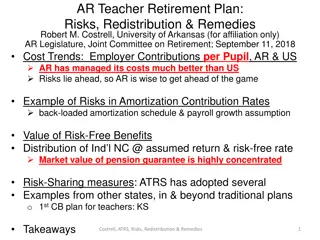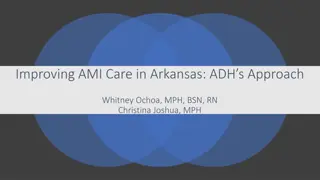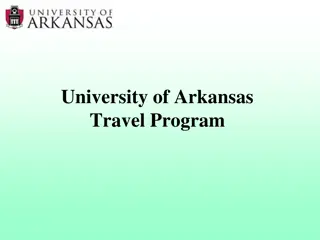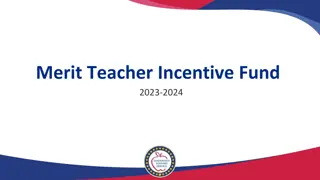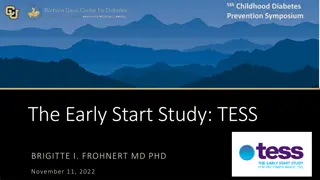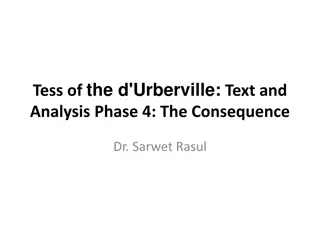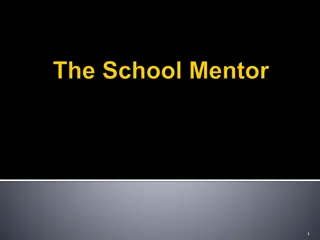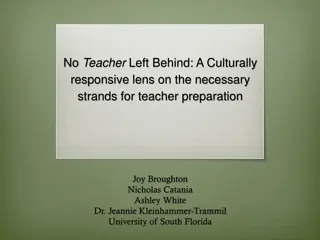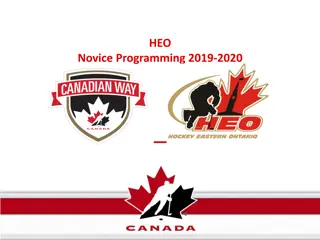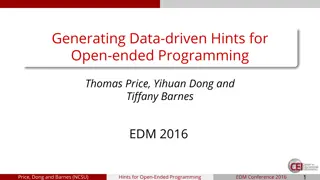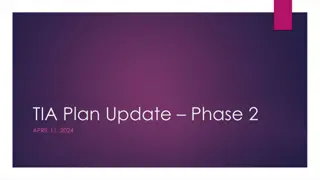Understanding TESS 2.0: A Guide for Arkansas Novice Teachers
Explore the Teacher Effectiveness Support System (TESS) 2.0 specifically designed for novice teachers in Arkansas. Learn about effective teaching methods, guiding improvement through rubrics, and the essential components of teacher excellence outlined in the ESSA. Dive into the TESS framework, its focus on continuous improvement, and the importance of student growth in the evaluation process.
Download Presentation

Please find below an Image/Link to download the presentation.
The content on the website is provided AS IS for your information and personal use only. It may not be sold, licensed, or shared on other websites without obtaining consent from the author. Download presentation by click this link. If you encounter any issues during the download, it is possible that the publisher has removed the file from their server.
E N D
Presentation Transcript
TESS 2.0 Arkansas Teacher Effectiveness Created for Arkansas Novice Teachers Created by The ADE Office of Educator Support and Development Little Rock AR
T O P I C S Welcome & Introductions About Teacher Effectiveness Guiding Improvement: The Rubric Closing & Response
T O P I C S Welcome & Introductions About Teacher Effectiveness Guiding Improvement: The Rubric Closing & Response
EFFECTIVE [IH-FEK-TIV] ADJECTIVE 1. ADEQUATE TO ACCOMPLISH A PURPOSE; PRODUCING THE INTENDED OR EXPECTED RESULT: EFFECTIVE TEACHING METHODS; EFFECTIVE STEPS TOWARD PEACE. www.dictionary.com
ESSA DEFINES EFFECTIVE TEACHERS Properly plans for all students Creates the best environment for student learning Uses the most effective instructional procedures Communicates & Collaborates effectively Continually grows
TEACHER EXCELLENCE & SUPPORT SYSTEM State Statute Act 1209 of 2011 Arkansas ESEA Flexibility Plan: Federal waiver from NCLB (2012) TESS Law Amended Act 709 & 1091 of 2013 & 2015 Federal Every Student Succeeds Act (ESSA) December 2015 Arkansas ESSA Act 295 of 2017 Law eff. 8/1/2017; Rules estimated final by 12/31/2017
TESS is for: Licensed & Non-licensed Teachers And Specialty Teachers: Gifted Coordinators Instructional Specialists Library Media Specialists School Counselors School Psychologists Speech Language Pathologists Note: Pre-school teachers not required to participate in TESS, but they may.
TESS & THE NOVICE TEACHER The Focus of TESS is: Effective teaching practice The impact of quality teaching on positive student outcomes Continuous improvement for teachers Student growth is embedded in the TESS Rubric A Summative Evaluation for Novice teachers is not required by the state (Novice = 3 years)
TESS & THE NOVICE TEACHER The Focus of TESS is: Teacher Learning & Growth is guided by a Professional Growth Plan (PGP) The Learning formats for teachers may be collaboration, self-directed research, or micro-credentialing Novice Teacher mentoring will be through Educational Co-Ops. Mentoring will be done is a coaching model.
TESS & THE NOVICE TEACHER These are local decisions: The use of physical documentation, or artifacts The number and format of observations & ratings Evidence of student growth Using the online system for TESS: BloomBoard
PROFESSIONAL LEARNING Before Planned for you Stand-Alone Sit & Git 1 day Training Short -Term Learning Watch a Video Read an article
T O P I C S Welcome & Introductions About Teacher Effectiveness Guiding Improvement: The Rubric Closing & Response
EFFECTIVE EFFECTIVE TEACHING TEACHING Can be defined Can be observed Creates evidence
Charlotte Danielson is an educational consultant who has extensive work experience in a wide range of positions. She created a framework to help teachers improve instructional practice.
THE TESS RUBRIC. . . Is grounded in research & up-to-date literature reviews. Is consistent; but flexible for new learning. Is based in pedagogical practice & unique to every teacher, every class, every school. Is simple, but masterful. Is based on the 2007 edition of The Framework for Teaching.
Framework for Teaching Design 4 Domain a group of components 22 Component a statement of effective teaching practice(s) 76 Element(s) essential part of the component
Domain 1: What a teacher knows and does in preparation for engaging students in learning. Domain 2: What a teacher does to create and maintain a culture for supporting cognitive engagement. The Focus Of Each Domain Domain 4: Domain 3: What a teacher does to cognitively engage students in content and the ability to learn What a teacher does to grow reflective practice & activity in and out of the classroom
Domain 1:Planning Domain 1:Planning & Preparation & Preparation 1a: Demonstrating Knowledge of Content and Pedagogy 1b: Demonstrating Knowledge of Students 1c: Setting Instructional Outcomes 1d: Demonstrating Knowledge of Resources 1e: Designing Coherent Instruction 1f: Designing Student Assessments
Domain 2: Environment Domain 2: Environment 2a: Creating an Environment of Respect and Rapport 2b: Establishing a Culture for Learning 2c: Managing Classroom Procedures 2d: Managing Student Behavior 2e: Organizing Physical Space
Domain 3: Instruction Domain 3: Instruction 3a: Communicating with Students 3b: Using Questioning and Discussion Techniques 3c: Engaging Students in Learning 3d: Using Assessment in Instruction 3e: Demonstrating Flexibility and Responsiveness
Domain 4:Professional Responsibilities Domain 4:Professional Responsibilities 4a: Reflecting on Teaching 4b: Maintaining Accurate Records 4c: Communicating with Families 4d: Participating in a Professional Community 4e: Growing and Developing Professionally 4f: Showing Professionalism 21
NAME THE DOMAIN ____Even though it is the first week of school, the teacher greets his students by names as they enter the classroom ____ The teacher plans to have students do an experiment tomorrow in science class. ____ The teacher shares with a colleague that the next time she teachers this lesson, she will have the students work in smaller groups rather than have them in groups of six. ____ The students are working in cooperative groups to come up with several ways to solve a math problem.
NAME THE DOMAIN ____While the teacher is explaining the math assignment, 2 students are passing notes. The teacher walks close and quietly redirects them. ____ The teacher writes following guided practice, the students will understand the difference between adhesion and cohesion. ____ Student work is displayed on the bulletin board. ____ The teacher works to contact each family during the first 9 weeks of school. ____ Ms. Walker is serving as a Novice Teacher coach.
NAME THE DOMAIN ____Students file completed work in the red folder on the side cabinet. ____The teacher has students practice turning in papers first across the rows, then from front to back. ____ The teacher stands quietly until students stop talking, then he gives instructions on the project. ____ Teacher: Nicely done. You have written about each step of the problem. ____ Students walk quietly in order to the lunchroom.
Appropriate use of technology Attention to individual student needs Cultural competence Developmental appropriateness Equity High expectations Student acceptance of responsibility
TESS LEVELS OF PERFORMANCE Unsatisfactory Basic Proficient Distinguished Not No Not clear Unaware Does not respond Poor Not congruent Consistent High quality Timely Accurate Appropriate Clear Effective High expectations Some Attempts to Limited Moderate Uneven Inconsistent Rudimentary All students Highly effective Entirely appropriate Adapted for individual students Fully aligned Extensive
TESS EVIDENCE IS. . . 1. Verbatim scripting of teacher, student, or stakeholder comments . 2. An observed aspect of the classroom or school environment. 3. Non-evaluative statements of observed teacher or student behavior. 4. Numeric information about time, student participation, resource use, etc. in class or school
TESS EVIDENCE IS. . . 1. Direct Observation Observer physically present 2. Indirect Observation Observer notes results of teacher s work 3. Artifacts resulting from planning, implementing and reflecting 4. Data program, achievement, demographic, perceptual
T O P I C S Welcome & Introductions About Teacher Effectiveness Guiding Improvement: The Rubric Closing & Response
3,2,1. . . 3 things you recall as important from this learning. 2 ah-ha s you ve had today. 1 questions that is still running around in your head.
Sandra Hurst, Director Sandra.Hurst@Arkansas.gov Becky Gibson, Educator Support Program Advisor Becky.Gibson@Arkansas.gov Maureen Harness, Educator Support Program Advisor Maureen.Harness@Arkansas.gov Renee Nelson, Educator Support Program Advisor Renee.Nelson@Arkansas.gov ADE Office of Educator Support & Development Four Capitol Mall Little Rock AR 31


